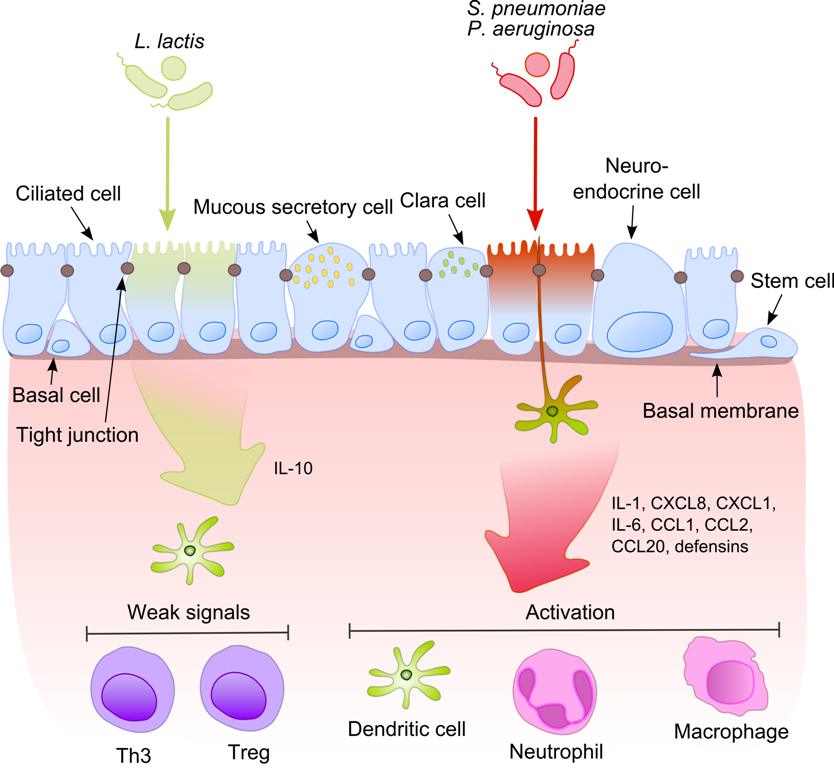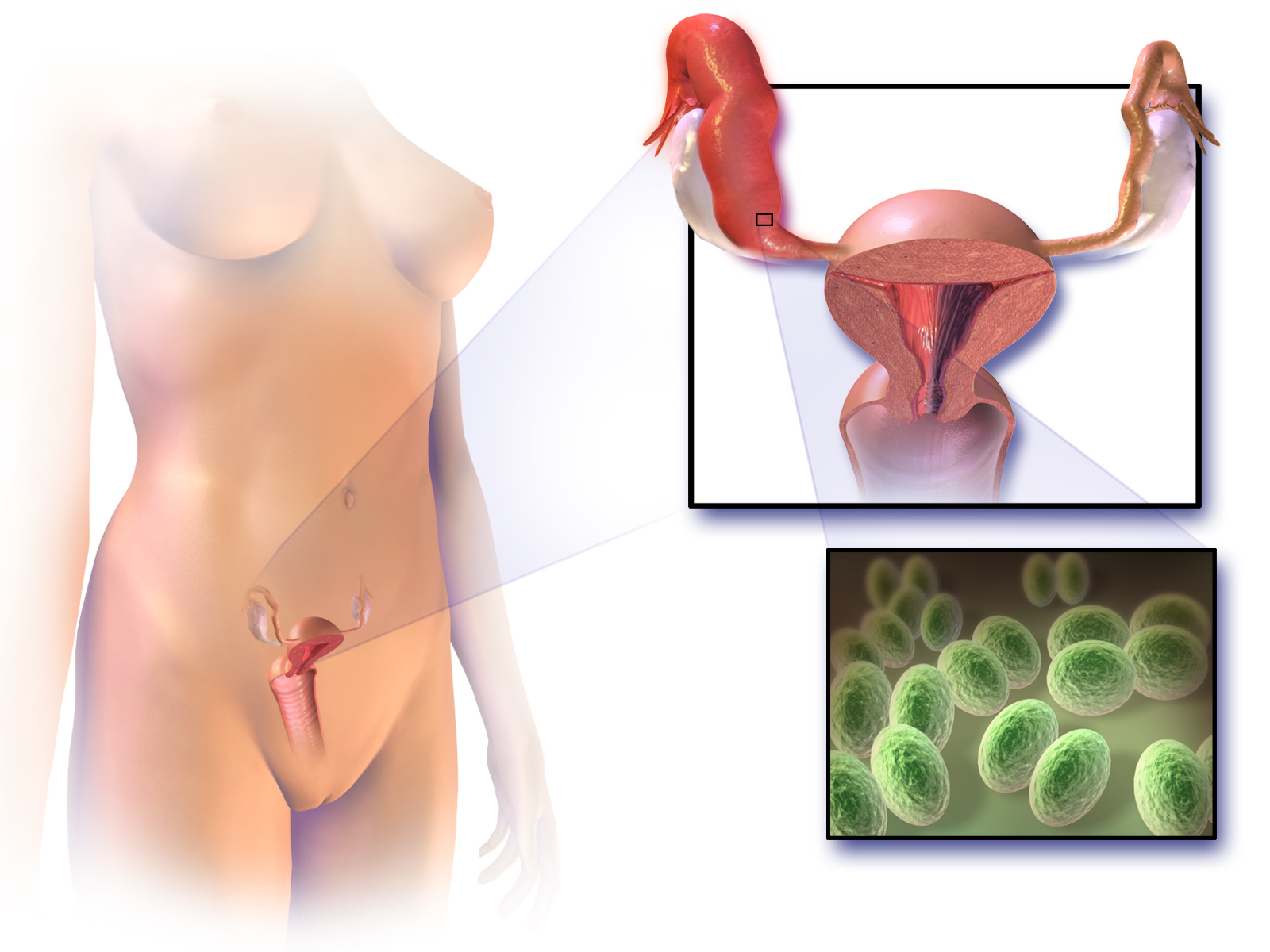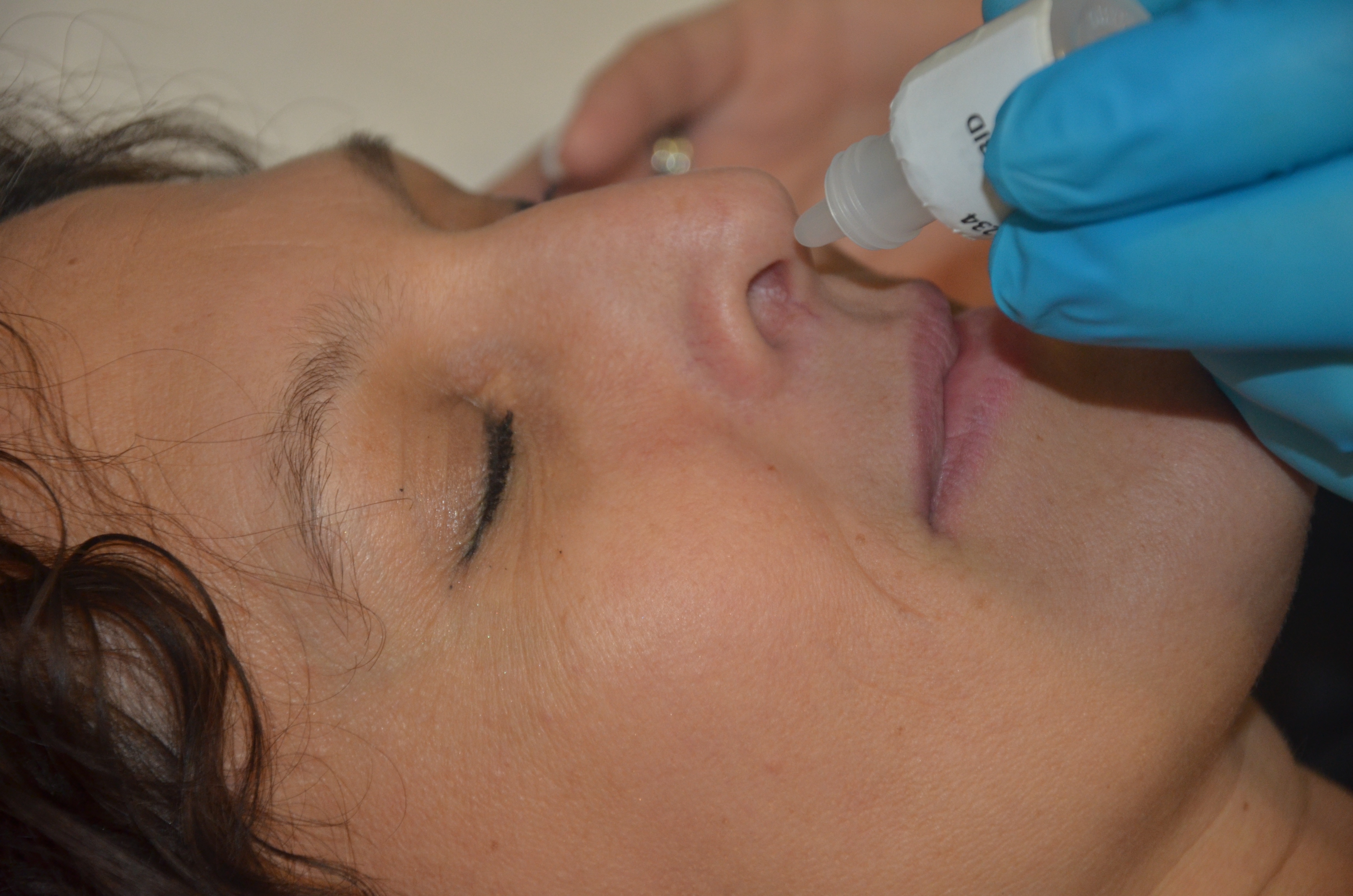|
Gentamicin
Gentamicin is an aminoglycoside antibiotic used to treat several types of bacterial infections. This may include bone infections, endocarditis, pelvic inflammatory disease, meningitis, pneumonia, urinary tract infections, and sepsis among others. It is not effective for gonorrhea or chlamydia infections. It can be given intravenously, by intramuscular injection, or topically. Topical formulations may be used in burns or for infections of the outside of the eye. It is often only used for two days until bacterial cultures determine what specific antibiotics the infection is sensitive to. The dose required should be monitored by blood testing. Gentamicin can cause inner ear problems and kidney problems. The inner ear problems can include problems with balance and hearing loss. These problems may be permanent. If used during pregnancy, it can cause harm to the developing fetus. However, it appears to be safe for use during breastfeeding. Gentamicin is a type of amin ... [...More Info...] [...Related Items...] OR: [Wikipedia] [Google] [Baidu] |
Aminoglycoside
Aminoglycoside is a medicinal and bacteriologic category of traditional Gram-negative antibacterial medications that inhibit protein synthesis and contain as a portion of the molecule an amino-modified glycoside (sugar). The term can also refer more generally to any organic molecule that contains amino sugar substructures. Aminoglycoside antibiotics display bactericidal activity against Gram-negative aerobes and some anaerobic bacilli where resistance has not yet arisen but generally not against Gram-positive and anaerobic Gram-negative bacteria.ME Levison, MD, 2012, Aminoglycosides, The Merck Manua accessed 22 February 2014. Streptomycin is the first-in-class aminoglycoside antibiotic. It is derived from ''Streptomyces griseus'' and is the earliest modern agent used against tuberculosis. Streptomycin lacks the common 2-deoxystreptamine moiety (image right, below) present in most other members of this class. Other examples of aminoglycosides include the deoxystreptamine-containin ... [...More Info...] [...Related Items...] OR: [Wikipedia] [Google] [Baidu] |
Ototoxic
Ototoxicity is the property of being toxic to the ear (''oto-''), specifically the cochlea or auditory nerve and sometimes the vestibular system, for example, as a side effect of a drug. The effects of ototoxicity can be reversible and temporary, or irreversible and permanent. It has been recognized since the 19th century. There are many well-known ototoxic drugs used in clinical situations, and they are prescribed, despite the risk of hearing disorders, for very serious health conditions. Ototoxic drugs include antibiotics (such as gentamicin, streptomycin, tobramycin), loop diuretics (such as furosemide), and platinum-based chemotherapy agents (such as cisplatin and carboplatin). A number of nonsteroidal anti-inflammatory drugs (NSAIDS) have also been shown to be ototoxic. This can result in sensorineural hearing loss, dysequilibrium, or both. Some environmental and occupational chemicals have also been shown to affect the auditory system and interact with noise. Signs and ... [...More Info...] [...Related Items...] OR: [Wikipedia] [Google] [Baidu] |
Bacterial Infection
Pathogenic bacteria are bacteria that can cause disease. This article focuses on the bacteria that are pathogenic to humans. Most species of bacteria are harmless and many are beneficial but others can cause infectious diseases. The number of these pathogenic species in humans is estimated to be fewer than a hundred. By contrast, several thousand species are considered part of the gut flora, with a few hundred species present in each individual human's digestive tract. The body is continually exposed to many species of bacteria, including beneficial commensals, which grow on the skin and mucous membranes, and saprophytes, which grow mainly in the soil and in decaying matter. The blood and tissue fluids contain nutrients sufficient to sustain the growth of many bacteria. The body has defence mechanisms that enable it to resist microbial invasion of its tissues and give it a natural immunity or innate resistance against many microorganisms. Pathogenic bacteria are speci ... [...More Info...] [...Related Items...] OR: [Wikipedia] [Google] [Baidu] |
Pelvic Inflammatory Disease
Pelvic inflammatory disease (PID), also known as pelvic inflammatory disorder, is an infection of the upper part of the female reproductive system, mainly the uterus, fallopian tubes, and ovaries, and inside of the pelvis. Often, there may be no symptoms. Signs and symptoms, when present, may include lower abdominal pain, vaginal discharge, fever, dysuria, burning with urination, dyspareunia, pain with sex, postcoital bleeding, bleeding after sex, or irregular menstruation. Untreated PID can result in long-term complications including infertility, ectopic pregnancy, chronic pelvic pain, and Infectious causes of cancer, cancer. The disease is caused by bacteria that spread from the vagina and cervix. It has been reported that infections by ''Neisseria gonorrhoeae'' or ''Chlamydia trachomatis'' are present in 75 to 90 percent of cases. However, in the UK it is reported by the NHS that infections by ''Neisseria gonorrhoeae'' and ''Chlamydia trachomatis'' are responsible for only a ... [...More Info...] [...Related Items...] OR: [Wikipedia] [Google] [Baidu] |
Nephrotoxic
Nephrotoxicity is toxicity in the kidneys. It is a poisonous effect of some substances, both toxic chemicals and medications, on kidney function. There are various forms, and some drugs may affect kidney function in more than one way. Nephrotoxins are substances displaying nephrotoxicity. Nephrotoxicity should not be confused with some medications predominantly excreted by the kidneys needing their dose adjusted for the decreased kidney function (e.g., heparin, lithium). Types of toxicity Cardiovascular * General: diuretics, β-blockers, vasodilator agents * Local: ACE inhibitors, ciclosporin, tacrolimus. Direct tubular effect * Proximal convoluted tubule: Aminoglycoside antibiotics (e.g., gentamicin), amphotericin B, cisplatin, radiocontrast media, immunoglobulins, mannitol * Distal tubule: NSAIDs (e.g. aspirin, ibuprofen, diclofenac), ACE inhibitors, ciclosporin, lithium salts, cyclophosphamide, amphotericin B * Tubular obstruction: sulphonamides, metho ... [...More Info...] [...Related Items...] OR: [Wikipedia] [Google] [Baidu] |
Hearing Loss
Hearing loss is a partial or total inability to hear. Hearing loss may be present at birth or acquired at any time afterwards. Hearing loss may occur in one or both ears. In children, hearing problems can affect the ability to acquire spoken language, and in adults it can create difficulties with social interaction and at work. Hearing loss can be temporary or permanent. Hearing loss related to age usually affects both ears and is due to cochlear hair cell loss. In some people, particularly older people, hearing loss can result in loneliness. Hearing loss may be caused by a number of factors, including: genetics, ageing, exposure to noise, some infections, birth complications, trauma to the ear, and certain medications or toxins. A common condition that results in hearing loss is chronic ear infections. Certain infections during pregnancy, such as cytomegalovirus, syphilis and rubella, may also cause hearing loss in the child. Hearing loss is diagnosed when hearing ... [...More Info...] [...Related Items...] OR: [Wikipedia] [Google] [Baidu] |
Gonorrhea
Gonorrhoea or gonorrhea, colloquially known as the clap, is a sexually transmitted infection (STI) caused by the bacterium ''Neisseria gonorrhoeae''. Infection may involve the genitals, mouth, or rectum. Gonorrhea is spread through sexual contact with an infected person, or from a vertical transmission, mother to a child during birth. Infected males may experience Dysuria, pain or burning with urination, discharge from the Human penis, penis, or testicular pain. Infected females may experience burning with urination, vaginal discharge, vaginal bleeding between Menstruation, periods, or pelvic pain. Complications in females include pelvic inflammatory disease and in males include epididymitis, inflammation of the epididymis. Many of those infected, however, have no symptoms. If untreated, gonorrhea can spread to septic arthritis, joints or endocarditis, heart valves. Globally, gonorrhea affects about 0.8% of women and 0.6% of men. An estimated 33 to 106 million new cases occu ... [...More Info...] [...Related Items...] OR: [Wikipedia] [Google] [Baidu] |
Micromonospora Purpurea
''Micromonospora'' is a genus of bacteria of the family Micromonosporaceae. The genus name was first proposed in 1923 by Danish physician Jeppe Ørskov in an attempt to classify what at the time was considered "ray fungi" based on morphology. Members of this genus are found throughout natural soil and sediment environments, as well as in association with roots of plants of various species. The genus is well known for its ability to produce a variety of medically relevant products. They are gram-positive, spore-forming, generally aerobic, and form a branched mycelium; they occur as saprotrophic forms in soil and water. Various species are sources of aminoglycoside antibiotics with spellings that end with ''-micin'', such as gentamicin Gentamicin is an aminoglycoside antibiotic used to treat several types of bacterial infections. This may include bone infections, endocarditis, pelvic inflammatory disease, meningitis, pneumonia, urinary tract infections, and sepsis am ... [...More Info...] [...Related Items...] OR: [Wikipedia] [Google] [Baidu] |
Topical
A topical medication is a medication that is applied to a particular place on or in the body. Most often topical medication means application to body surfaces such as the skin or mucous membranes to treat ailments via a large range of classes including creams, foams, gels, lotions, and ointments. Many topical medications are epicutaneous, meaning that they are applied directly to the skin. Topical medications may also be inhalational, such as asthma medications, or applied to the surface of tissues other than the skin, such as eye drops applied to the conjunctiva, or ear drops placed in the ear, or medications applied to the surface of a tooth. The word ''topical'' derives from Greek τοπικός ''topikos'', "of a place". Justification Topical drug delivery is a route of administering drugs via the skin to provide topical therapeutic effects. As skin is one of the largest and most superficial organs in the human body, pharmacists utilise it to deliver various dr ... [...More Info...] [...Related Items...] OR: [Wikipedia] [Google] [Baidu] |
Bactericidal
A bactericide or bacteriocide, sometimes abbreviated Bcidal, is a substance which kills bacteria. Bactericides are disinfectants, antiseptics, or antibiotics. However, material surfaces can also have bactericidal properties based solely on their physical surface structure, as for example biomaterials like insect wings. Disinfectants The most used disinfectants are those applying *active chlorine (i.e., hypochlorites, chloramines, sodium dichloroisocyanurate, dichloroisocyanurate and trichloroisocyanurate, wet chlorine, chlorine dioxide, etc.), *active oxygen (peroxides, such as peracetic acid, potassium persulfate, sodium perborate, sodium percarbonate, and urea perhydrate), *iodine (povidone-iodine, Lugol's solution, iodine tincture, iodinated nonionic surfactants), *concentrated alcohols (mainly ethanol, 1-propanol, called also n-propanol and 2-propanol, called isopropanol and mixtures thereof; further, 2-phenoxyethanol and 1- and 2-phenoxypropanols are used), *phenols, phenolic ... [...More Info...] [...Related Items...] OR: [Wikipedia] [Google] [Baidu] |





